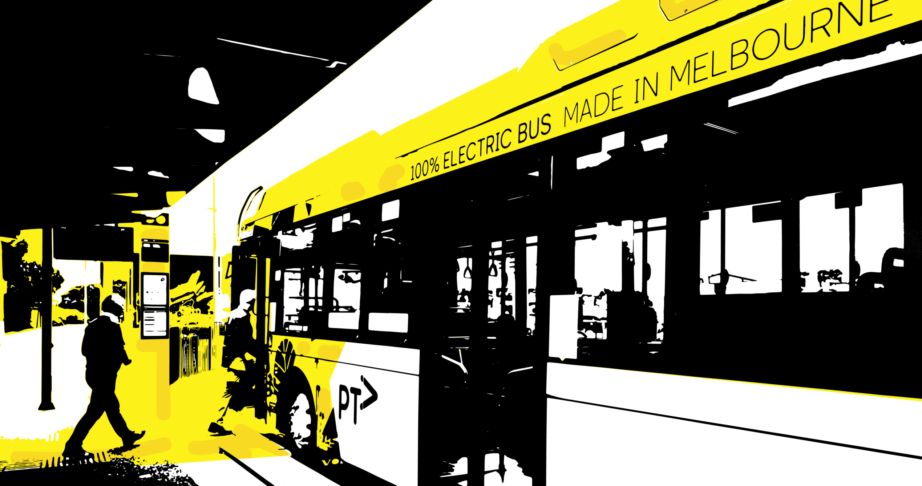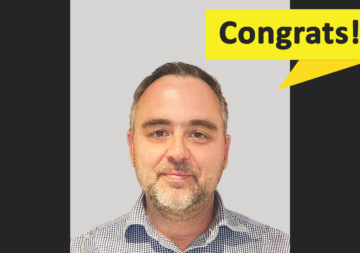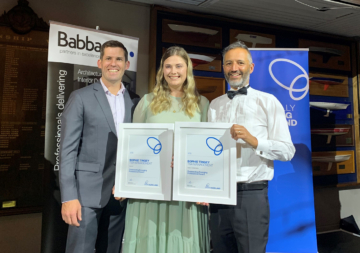
19 December 2022
Victoria’s Zero Emissions Bus Trial rolls into service
The Victorian Government is investing $20 million in a series of three-year zero emission bus trials across the state, involving several bus operators.
TSA has partnered with ComfortDelGro Corporation Australia (CDC), one of the largest land transport operators in Australia. The team also included Volvo, ENGIE, Volgren and Monash University. Together, we will be running a trial of eight battery electric buses at the Oakleigh Depot in the southeast of Melbourne. This trial is a key opportunity for industry to collaborate, and build certainty and a better understanding of the transition towards clean energy public transport.
Decarbonising bus transport
In Australia, the transport sector is our third biggest, and fastest growing, source of greenhouse gas (GHG) emissions. The National Greenhouse Gas Inventory accounts to September 2022 reports that transport is responsible for approximately 19% of total emissions. The sector needs to transform at an unparalleled rate and scale to meet the Australian State and Federal Governments’ targets for net zero emissions by 2045 and 2050 respectively.
Victoria’s transport sector emissions reduction pledge includes clear actions that reduce emissions now and lay the foundations for a cleaner future. The pledge’s first set of commitments will fast-track Victoria’s shift to net zero emissions transport powered by clean energy. This will drive down emissions and spark new industries that will reinvigorate manufacturing and create jobs.
The bus network is an essential part of Victoria’s transport sector. Buses connect over 135 million Victorians every year to work, to school, to services and the shops – around 21 per cent of all trips taken on metropolitan public transport. In 2021-22 bus services in Victoria travelled over 155 million scheduled kilometres, which is almost three times more than the distance travelled by trains. At an average bus emission rate of 1.35 kg/km this would equate to 209,250 tonnes of CO2. Transitioning these bus services to zero-emission will be an effective and efficient way for communities to reduce their carbon footprint.
Further, transitioning to zero emission buses is expected to unlock benefits such as:
- Improved customer experience through reduced noise and vibration, and better air quality and public amenity.
- Lower operating costs compared to diesel buses (though capital costs are currently higher).
Many international jurisdictions are well advanced in this transition and realising these benefits. The jury is in, and the Victoria Government has pledged that all new public transport bus purchases will be zero emission from 2025. So now it’s time to determine an efficient investment and delivery pathway.
Types of zero emissions buses (ZEBs)
This transition needs to focus on advanced and emerging technologies, such as battery electric buses and hydrogen fuel cell electric buses. Battery electric buses operate using an electric motor powered by electricity from a battery charged using electricity. In a hydrogen fuel cell bus, the fuel cell converts hydrogen into electricity to power the vehicle.
About Victoria’s Zero Emission Bus Trial
The Victorian Government has put $20 million toward a state-wide trial to investigate solutions to achieve a zero-emission bus fleet and create a pipeline of local job opportunities. This Zero Emission Bus Trial will run over three years, trialling different technologies on buses right across the state. It will support the transition to 100 per cent zero emissions bus purchases from 2025.
TSA has partnered with CDC, Volvo, ENGIE, Volgren, and Monash University in a trial of eight battery electric buses at the Oakleigh Depot in the southeast of Melbourne. The trial will provide customers with a safe, efficient, reliable, smooth, quieter, and emissions-free bus trips. In November this year, the trial commenced operations, deploying the first battery-electric bus on routes 601 and 630 covering Huntingdale Train Station, Monash University in Clayton, Gardenvale Train Station and Ormond Train Station.
Route 601 is one of Melbourne’s busiest and most frequent bus services. Trialling battery electric buses on this route will build understanding of the customer and operational impacts on a high-frequency, high-capacity service. The remaining seven battery-electric buses will be gradually rolled out across the three-year trial.
The trial includes bus charging infrastructure, which has already been installed at the Oakleigh Depot. Additional charging infrastructure installed at Monash University Bus Interchange allows our trial to test the concept of on-route charging to maintain the range of vehicles and better understand operational needs and requirements.
TSA’s role: Operational readiness, assurance and project support
TSA’s role in the initial stages of this trial was providing strategic and bid development support during the tendering phase. Since then, we have moved into providing operational readiness, assurance and project support.
As a relatively new technology, there isn’t a great deal of existing information about the practicalities of running, powering and maintaining zero emissions buses on a busy public transport network. There was also the added complexity of the local manufacture of these new types of buses. This is where TSA’s operational readiness and assurance teams came in. We have been the glue that brought together the bus operator, charging infrastructure and bus manufacturer. As an interface between parties, we helped bring it all together to run a smooth trial, on a busy route.
What is operational readiness
Essentially, operational readiness is a suite of activities identified with stakeholders, to ensure our clients’ projects are ready for day 1 operations. This covers handover management, staff development, service planning, business integration, and customer service. These activities are identified collaboratively with key stakeholders before being tracked to completion with supporting monitoring tools and management framework.
How we applied operational readiness to the Zero Emissions Bus trail
Our approach consisted of:
- Developing an operational readiness plan. This included management and responsibilities, readiness process articulation, associated risks and controls, and activity tracking and display tools.
- Developing a comprehensive operational readiness activity matrix. This was collaboratively developed with partners and exhaustively listed the activities required to integrate the bus and charging infrastructure into service operations.
- Refining the delivery program. We included the operational readiness activities with the delivery activities, and applied activity sequencing to ensure any delay repercussions would be indicated to enable early resolution.
- Challenging the program activities and milestones. This was important to ensure efficient delivery and instil confidence in the plan.
- Provided project reporting, including an operational readiness dashboard. This helped share progress with partners and flag any issues and their associated control measures.
We also facilitated safety-in-design and operational readiness risk workshops to assess the risk exposure of the trial across design, operational and maintenance aspects of the bus and depot. These sessions helped the team develop a better shared understanding of the risks and additional mitigations required to address the key concerns of the bus operator. These workshops also provided an opportunity for key issues to be escalated and resolved through adjustments in the trial’s design and execution.
What the future holds for this Zero Emission Bus Trial
It’s been an energetic and collaborative team. We commissioned the first electric bus for the Oakleigh Depot with great excitement. During this first phase we have overcome supply chain issues for the bus chassis and charging infrastructure, exhibited the first bus at Sydney’s Bus and Coach Expo in early October, and still had time to deliver bus driver training. But this was only the first of several key milestones. Over the next three years of the trial we will continue to work with the trial participants to progressively deliver the remaining buses, and track, monitor and report on the performance of the trial. This trial will provide valuable operational experience and data to inform the longer-term transition of CDC’s fleet to zero emission buses. Together we aim to explore ways of achieving better environmental and community outcomes. We will gain insights and understanding to optimise the future deployment of battery-electric buses that suit local conditions and operations.
TSA’s Zero Emissions Bus team
Our team for the trial includes Andrew Lau, Charlie Simmons, Gavin Penny, Sarfraz Hussain and Richard Lai. This team has brought a deep understanding of Victoria’s transport network, transport technology and operations. By combining this with operational readiness and assurance expertise we helped the team mitigate risks and get ready for day 1 operations.
TSA’s work on decarbonising public transport
This work complements our other engagements in decarbonising transport. Recent projects include working with Department of Transport on Bus Network Reform, and with Department of Environment, Land, Water and Planning on Hume Hydrogen Highway. With these projects we’re building valuable experience and insights for project development and delivery of zero-emission transport.
This work really matters to us as a responsible corporate citizen. But more importantly, it really matters to our people. They come to work each day to contribute to projects like this that create a better world and more sustainable communities.
If you’d like to find out more, or talk to us about your project, contact us at hello@tsamgt.com.
Find out more about TSA Advisory.


